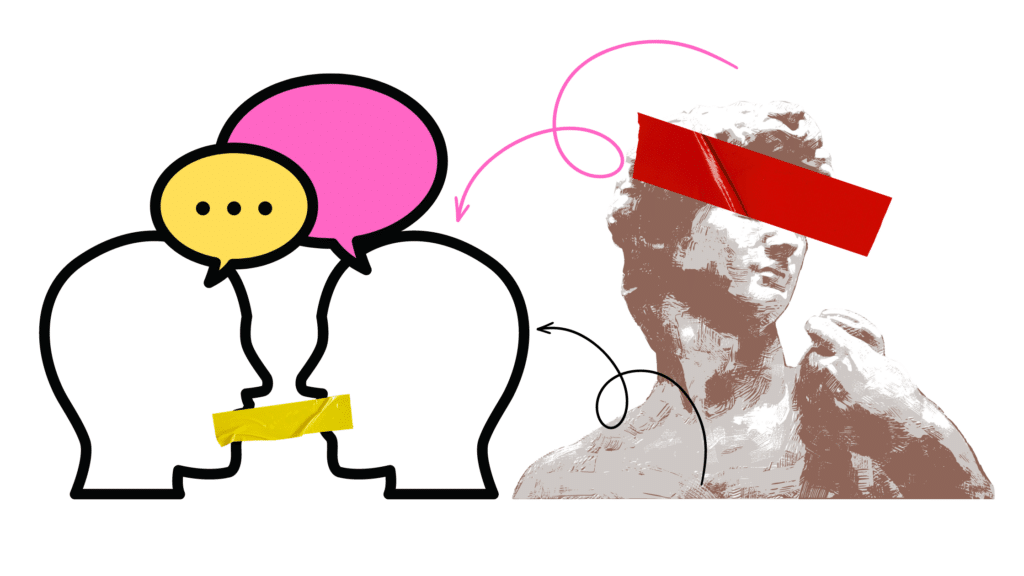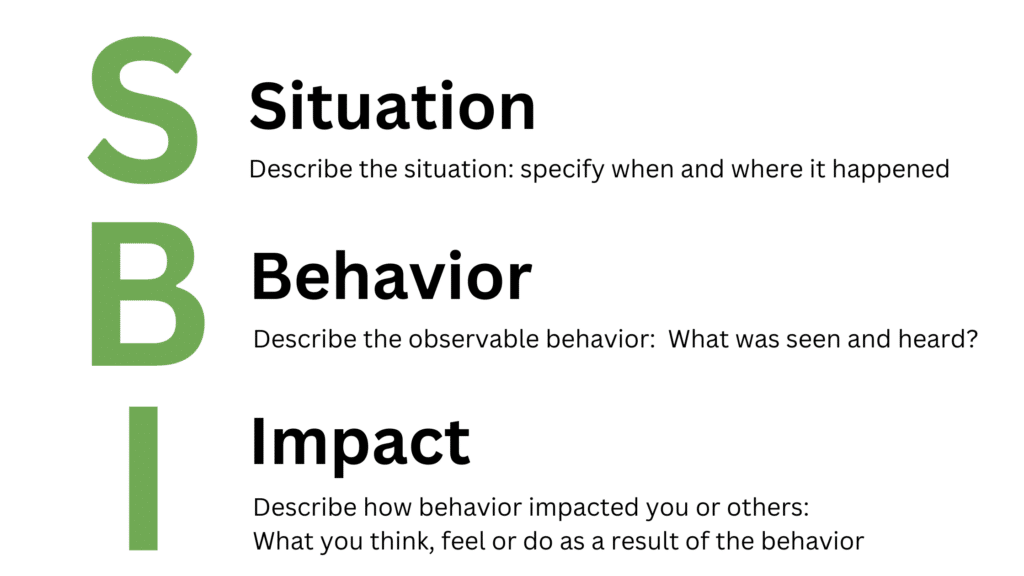Feedback is a key skill for leaders and teams in organizations to be able to learn and develop.
In my opinion, feedback is an amazing two-way street for development, leading to[1]:
- Increased engagement
- Improved employee relationships
- Reduced employee turnover rates
In fact a Gallup (2011) study of 65,672 employees found that those receiving strengths-based feedback had 14.9% lower turnover rates than the employees who didn’t receive any feedback[1].
Furthermore, a study of 530 work units have also found that teams with leaders, who received strenths-based feedback performed 12.5% better (higher productivity) after receiving feedback than teams with leaders who didn’t receive any feedback[1].
And this short Harvard Business Review article and research suggests that 70% of feedback recipients will perform above average[2]. So, feedback has a great impact on organizational performance.
However, 30% of feedback interventions actually hurt performance because the feedback is poorly delivered[2].
Try to read that for yourself once more…
30% of feedback hurt performance because it is poorly delivered!
So, leaders and organizations still struggle to build real feedback and coaching cultures.
What an amazing opportunity that is to impact performance, well-being and results in organizations.
Let us now dive into some of the mechanisms of feedback.
Effective feedback and feedforward.
Essentially feedback and feedforward should answer three different questions[3]:
- FEED UP → Where are you going? (the goals and outcomes, e.g. WHAT to achieve and WHY).
- FEEDBACK → How are you going? (how you are doing related to what to achieve).
- FEEDFORWARD → Where to next? (influence the future; suggestions on next steps to improve).
Feedback is really a dialogue exploring situations and what is observed, intentions behind actions etc.
And feedforward is a two-way street to establish what success looks like and next steps to become better.

Feedback is supposed to be a gift and something you welcome from others also as a leader.
It sounds really simple and it is, but often it becomes challenging because of team dynamics, group dynamics and then comes power dynamics of manager-employee relationships etc.
With maturity it becomes easier to distinguish between mean-spirited negative attacks and constructive feedback and leaders have an important role in building a feedback culture of constructive feedback.
Thinking about feedback and feedforward through the lens of the above three questions, you need to answer, can make it easier to structure and grasp.
Next, let us zoom in on feedback.
What you can do to improve your “feedback muscle”.
When we talk about feedback, both receiving and giving feedback is often related with our primal brain reactions of fear; fight, flight, freeze reactions.
You may already at the outset of someone giving you feedback feel the threat (even if it is well-meaning).
You may feel attacked or threatened.
Even the word “feedback” itself can trigger those emotions for some.
That’s very normal human reactions.
And there is a way out of these emotions. Practice.
Practicing feedback in smaller scale, as often as possible, in small interactions and as part of every 1:1s, meetings and work collaboration is helpful in building and expanding your “feedback muscle”.
Begin with the less threatening feedback and making that a natural part of your interactions with others.
Then move to more challenging feedback.
I like to distinguish between two kinds of feedback (see Table 1 below).
Acknowledging feedback and developmental feedback.
| 1. Acknowledging Feedback | 2. Developmental Feedback |
|---|---|
| Recognize and acknowledge positive behaviors | Course corrective, constructive and developmental |
| Reinforcing behaviors and building confidence | Enables others to grow through self-awareness |
Acknowledging feedback is where you recognize and acknowledge someone else’s positive behaviors.
This helps reinforce the behaviors we would like to see. At the same time it makes the feedback recipient feel valued and seen and it builds self-confidence in others.
This kind of feedback is a great place to begin exercising your “feedback muscle” as it often feels easier, safer and with less interpersonal risks.
Developmental feedback is constructive and course corrective to learn, improve and develop through self-awareness.
This is focused on what the feedback recipient needs to continue doing and it is about identifying improvement areas to do better. This is actually a gift, because it can help others become aware of their blind spots where they may negatively affect others and how they can improve skills and approaches.
Often, though, when we ask for feedback, we receive poor-quality feedback that is too generic and broad.
This great Harvard Business Review article, How to Ask for the Feedback You Really Need, points out that it is because we often request feedback that is too generic, too open and too late[4].
If you want to move from generic to more targeted feedback, consider this three-step process[4]:
- Choose a quarterly development area
- Select a specific skill or behavior to improve within your development area
- Ask someone to observe you working on that skill or behavior and share their feedback instantly
Targeted feedback requires more focused effort on the specific areas you want to develop to be truly effective.
With this overview, let us work with an effective feedback model called the SBI model.
How to give feedback using the SBI Model.
The SBI Model or Situation-Behavior-Impact model for feedback is a three-part model developed by the Center for Creative Leadership (see Figure 1).
This great research-based feedback model helps in closing the gap between intentions of actions and behaviors and the impact by clarifying the situation, describing the behavior and explaining the impact and — then, exploring intentions[5].

Here’s an example of using the SBI model for your overview[5]:
- Situation:
Describe the specific situation you are referring to and specify when and where it happened.
Example: “Is this a good time to talk?”… “Great. At the 10.00 am team meeting this Friday (…)” - Behavior:
Describe the actual observable behavior and what you saw and heard, not judging.
Example: “You interrupted me, when I was sharing my opinion and views on our team’s collaboration (…)” - Impact:
Describe what was the result of the behaviors, so how the behavior impacted you or others.
Example: “That made me feel frustrated when you interrupted me because it made me feel like my opinions weren’t valued (…)” - EXTRA – Intent:
Explore and ask about the person’s original intentions behind the behaviors and actions.
Example: “What were your intentions of interrupting me?” … “What was going on for you there? (…)”
The SBI(I) model is quite direct and useful in reducing anxiety of delivering feedback as well as exploring and understanding the intentions we have behind our actions and behaviors, which can evoke self-awareness[5].
To move from feedback to feedforward, you can consider to explore the question Where to next? with the person and talk about the next steps to improve this interaction and better any future situations as well as suggested ways of changing the behavior.
Now remember.
Feedback is supposed to be a gift shared with good intentions.
How you ask for and deliver feedback has a great impact on engagement, performance and continuous growth.
Feedback, feedforward and coaching skills are critical capabilities for organizations.
Make sure to hone them.
P.S. What are your best and worst examples of feedback? Share your thoughts in the comments.
References.
[1]Asplund, J. and Blacksmith, N. (2011) The Secret of Higher Performance. Available at: Gallup (gallup.com). (Accessed 25 May 2024).
[2]Chamorro-Premuzic, T. (2015) Is How You Deliver Feedback Doing More Harm than Good? Available at: Harvard Business Review (hbr.org). (Accessed 25 May 2024).
[3)Molloy, E. K. and Boud, D. (2013) Feedback Models for Learning, Teaching and Performance. Available at: Springer (springer.com). (Accessed 25 May 2024).
[4]Davey, L. (2024) How to Ask for the Feedback You Really Need. Available at Harvard Business Review (hbr.org). (Accessed 25 May 2024).
[5]Center for Creative Leadership (2022) Use Situation-Behavior-Impact (SBI)™ to Understand Intent. Available at Center for Creative Leadership (ccl.org). (Accessed 25 May 2024).

